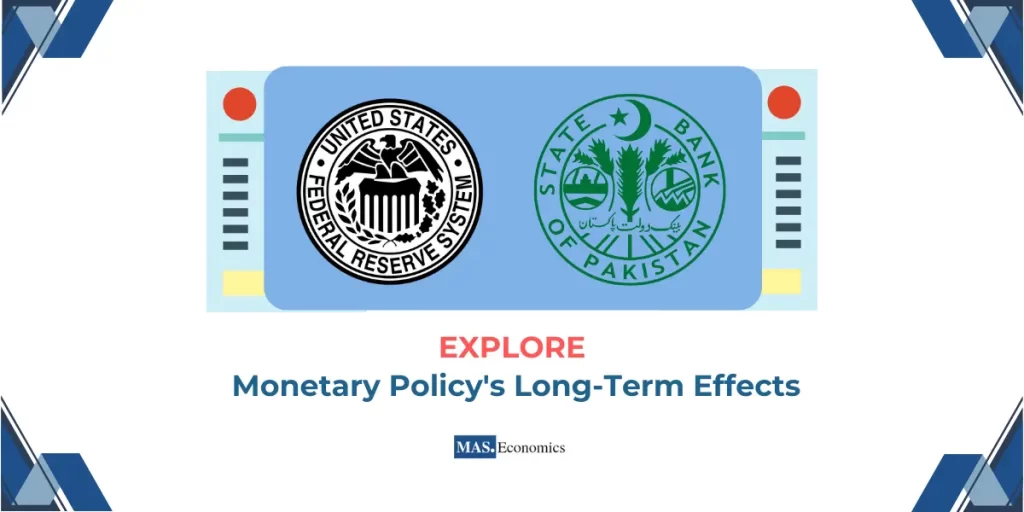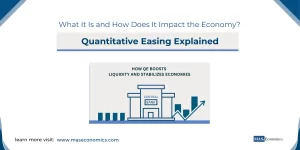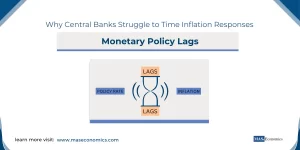Welcome to MASEconomics, your trusted source for economic insights. Monetary policy, characterized by policy rate changes, often dominates headlines and discussions regarding economic management. Central banks are tasked with steering the ship of the economy, using policy rates as their primary tool. However, what often gets lost in the noise of these announcements is the long-term impact of these policy decisions. We hear about interest rate hikes or cuts, but do we truly understand the profound and enduring consequences they can have on an economy’s future?
This article delves into the intricacies of the long-term effects of policy rate changes, offering insights from recent research in the field.
The Puzzle of Monetary Policy
Monetary policy decisions, especially policy rate changes, have traditionally been associated with immediate effects on inflation, employment, and economic growth. When central banks announce rate hikes to combat inflation or rate cuts to stimulate economic activity, it’s typically seen as a short-term measure—a necessary tool to keep the economy steady.
Yet, recent research led by renowned economists such as Òscar Jordà, Sanjay R. Singh, and Alan M. Taylor has uncovered a more complex and enduring story. This research suggests that policy rate changes can leave a lasting imprint on an economy’s productive potential, a concept beyond the usual considerations of inflation and employment. This long-term impact can significantly shape an economy’s growth trajectory, often unexpectedly.
Unpacking the Long-Term Effects
To appreciate the long-term effects of policy rate changes, it’s essential to recognize the mechanisms through which these impacts occur:
Investment in Research and Development (R&D)
One of the key channels through which policy rate changes influence an economy’s future is R&D investment. When interest rates rise, businesses tend to scale back investments across the board, including in innovative endeavors like R&D. This reduced investment can hinder long-term productivity growth.
Labor Dynamics
Interest rate shifts can also affect the labor force. During economic contractions due to rate hikes, job layoffs can result in losing skills and human capital. The longer workers remain unemployed, the more their skills erode, potentially diminishing the economy’s long-term potential.
Research Revelations
Recent research has shed light on the persistent impact of policy rate changes on an economy’s future. Often based on historical data and innovative methodologies, these studies challenge the conventional view that monetary policy is primarily a short-term tool. Instead, they emphasize the lasting influence of these decisions.
One significant finding is that an unexpected 1% increase in interest rates can lead to a substantial 5% lower output after 12 years. To put this into perspective, consider that a 5% decline in the output trend in a country like the United States could translate to an average individual income reduction of $3,000 in today’s dollars.
This long-term impact is broader than overall economic output. It also extends to the components that constitute an economy’s productive potential. While labor may revert to its pre-shock trend after a rate hike, total factor productivity (TFP) and capital can suffer. TFP, which reflects how efficiently an economy utilizes its labor and capital, can decline by around 3% and capital by approximately 4% after 12 years.
No Quick Fixes
Interestingly, when it comes to mitigating these long-term effects, there are no quick fixes. Lowering interest rates, often a strategy to stimulate short-term economic growth, does not have substantial long-term repercussions. On the other hand, raising interest rates in response to inflation or other concerns can cast a lingering shadow on an economy’s productive potential.
Connecting Research to Policy
Now, let’s delve into how these recent central bank decisions align with the research findings on the long-term effects of policy rate changes. These decisions provide practical insights into how monetary policymakers navigate the intricate balance between immediate concerns and lasting economic consequences.
State Bank of Pakistan (SBP)
In its most recent Monetary Policy Statement on September 14, 2023, the SBP maintained its policy rate at a substantial 22 percent. This decision came after considering several factors, including a decline in inflation from its peak earlier in the year and expectations of further inflation reduction in the coming months.
The SBP’s decision reflects the research’s emphasis on considering both short-term and long-term factors in monetary policy. While the high policy rate addresses immediate inflationary concerns, it also underscores the need to manage long-term inflation expectations and preserve the nation’s economic potential. This approach aligns with the research’s insight that maintaining a prudent fiscal stance is crucial for achieving sustainable growth and medium-term inflation targets.
Federal Reserve Bank of United States
The Federal Reserve, in its latest FOMC statement, acknowledged the solid pace of economic expansion, though it noted a slowdown in job gains and persistent inflation. The Committee maintained the federal funds rate at 5-1/4 to 5-1/2 percent, emphasizing its commitment to returning inflation to its 2 percent objective.
The Fed’s stance illustrates a nuanced approach to managing economic conditions, considering immediate and longer-term considerations. It recognizes that tighter credit conditions while addressing immediate inflation risks, may also affect economic activity and hiring. This mirrors the research’s findings that monetary policy can have enduring effects, and the extent of these impacts remains uncertain.
Conclusion
In monetary policy, what we often perceive as temporary and immediate actions can have profound and enduring consequences. Recent research has unveiled the intricate web of cause and effect, highlighting how policy rate changes can leave an indelible mark on an economy’s future. As we continue to dissect the long-term effects of monetary policy, it becomes increasingly apparent that a more comprehensive understanding of the repercussions is essential for informed decision-making by central banks worldwide.
Acknowledging the far-reaching nature of these consequences reinforces the importance of striking a balance between short-term stability and long-term prosperity, ensuring that today’s policy decisions don’t compromise tomorrow’s economic potential.
Stay informed, stay ahead, and keep learning with MASEconomics!




